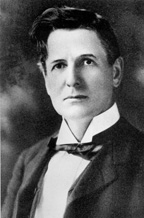•This blog entry has been revised to ensure historical accuracy.
There is much confusion regarding the political term indigenous people and its application or misapplication to the natives of the Hawaiian Islands. But before we can discern and qualify whether or not the natives of Hawai‘i are an indigenous people, we need to begin with definitions. By definition, indigenous is “originating or occurring naturally in a particular place,” whereas aboriginal is “inhabiting or existing in a land from the earliest times,” also referring to human migration as “first to arrive in a region.” According to Hawaiian history, the natives of the Hawaiian Islands, who are Polynesians, did not originate in the islands but rather came from central Polynesia between 1 and 300 A.D.
The term indigenous is common parlance in taxonomy, which is the branch of science concerned with the classification of plants and animals, e.g. the Black Bear is indigenous to the Americas, or the ‘Ohi‘a Lehua plant is indigenous to Hawai‘i. In this use, indigenous and endemic are synonymous. Aboriginal, on the other hand, is associated with migrations. You don’t refer to plants or animals as aboriginal. There are, however, instances of when Native Americans were called indigenous as early as 1838, but this also needs to be understood within the context of race relations at the time. Throughout the nineteenth century, Americans stereotypically referred to Native Americans as savages, even using the words noble and ignoble savage. This was a demeaning label as if Native Americans were animals.
The term indigenous as it applies in a “political context” to different people throughout the world appear to have been first coined in 1972 when the United Nations established a Sub-Commission on Prevention of Discrimination and Protection of Minorities. Jose R. Martinez Cobo served as Special Rapporteur and was the author of the Study on the Problem of Discrimination against Indigenous Populations. Cobo was the first to provide the following definition, “Indigenous communities, peoples and nations are those which, having a historical continuity with pre-invasion and pre-colonial societies that developed on their territories, consider themselves distinct from other sectors of the societies now prevailing on those territories, or parts of them.”
James Anaya, who served as Special Rapporteur on the Rights of Indigenous Peoples, defines indigenous peoples as “living descendants of pre-invasion inhabitants of lands now dominated by others. They are culturally distinct groups that find themselves engulfed by other settler societies born of forces of empire and conquest.” Both Cobo and Anaya refer to countries such as the United States of America and Mexico, where in both countries or States, there pre-existed tribal peoples such as the Apache or the Zapotec. Indigenous peoples would not apply to a State such as Germany because Germanic tribal peoples such as the Teutonic, Suebian or Gothic were the ones that formed the German State as we know it today. They were not invaded or colonized by a State when they were still tribal. This same logic would apply to the Tongan State where it was the Tongan people, who are Polynesian, that established their State that exist today.
On June 27, 1989, the concept of indigenous peoples was adopted by the International Labor Organization in its Indigenous and Tribal Peoples Convention (No. 169), which entered into force on September 5, 1991. Article 1 states: “This Convention applies to: (a) tribal peoples in independent countries whose social, cultural and economic conditions distinguish them from other sections of the national community, and whose status is regulated wholly or partially by their own customs or traditions or by special laws or regulations; (b) peoples in independent countries who are regarded as indigenous on account of their descent from the populations which inhabited the country, or a geological region to the which the country belongs, at the time of conquest or colonization or the establishment of present state boundaries and who, irrespective of their legal status, retain some or all of their own social, economic, cultural and political institutions.”
By these definitions, it is clear that indigenous peoples are distinguished from the State they reside in, and the term does not apply to the citizenry of States. In their journal article Indigenous “Sovereignty” and International Law: Revised Strategies for Pursuing “Self-Determination,” Corntassel and Primeau explain that indigenous peoples are viewed not as sovereign States, but rather “any stateless group” residing within the territorial dominions of existing sovereign States [17(2) Human Rights Quarterly 347 (1995)].
On September 13, 2007, the United Nations General Assembly passed a resolution proclaiming the United Nations’ Declaration on the Rights of Indigenous Peoples. While the Declaration has no definition of indigenous peoples, it does provide what rights indigenous peoples have within the States. What is clear is that the Declaration distinguishes between indigenous peoples and the State they reside in. In its preamble, the Declaration provides, “Convinced that the recognition of the rights of indigenous peoples in this Declaration will enhance harmonious and cooperative relations between the State and indigenous peoples, based on principles of justice, democracy, respect for human rights, non-discrimination and good faith,” and “Encouraging States to comply with and effectively implement all their obligations as they apply to indigenous peoples under international instruments, in particular those related to human rights, in consultation and cooperation with the peoples concerned.”
The first United States law to identify the natives of the Hawaiian Islands as indigenous is the 1993 joint resolution to acknowledge the 100th anniversary of the January 17, 1893 overthrow of the Kingdom of Hawai‘i, and to offer an apology to Native Hawaiians on behalf of the United States for the overthrow of the Kingdom of Hawai‘i. The Apology resolution stated, “Whereas, the indigenous Hawaiian people never directly relinquished their claims to their inherent sovereignty as a people or over their national laws to the United States, either through their monarchy or through a plebiscite or referendum.” In 2011, it was inserted in Act 195—Kana‘iolowalu, where it states, “The Native Hawaiian people are hereby recognized as the only indigenous, aboriginal, maoli people of Hawai‘i.” Act 195 also specifically made reference to the “United Nations Declaration on the Rights of Indigenous Peoples.”
This erroneous application of the political term indigenous people upon the natives of the Hawaiian Islands has been the cause of much confusion and assumes that natives never had a sovereign and independent State of their own. Through the explicit acknowledgment by the Permanent Court of Arbitration of the Hawaiian Kingdom as a State from 1999 to 2001, as well as academic and scholarly research, we now know this identification is a complete fabrication.
Since the Hawaiian Kingdom was recognized as a sovereign and independent State in the nineteenth century, the natives comprised its citizenry, which was called Hawaiian subjects. As a nationality, the Hawaiian citizenry was opened to non-natives who were either born on Hawaiian territory (jus soli), or naturalized, which had a residency requirement.
The term that was used to identify the natives amongst the Hawaiian citizenry was aboriginal Hawaiian; and the Hawaiian translation of aboriginal Hawaiian is kanaka maoli as opposed to kanaka Hawai‘i, which is Hawaiian subject. According to the 1890 Hawaiian census, there were 40,622 aboriginal Hawaiians (kanaka maoli), both pure and part, and 7,495 non-aboriginal Hawaiians (kanaka Hawai‘i), which included: 4,117 Portuguese; 1,701 Chinese and Japanese; 1,617 other White foreigners; and 60 other nationalities.
In her will dated October 31, 1883, Princes Bernice Pauahi Bishop set the foundation for the establishment of the Kamehameha Schools to be built in 1887. Article 13 of her will made specific reference to aboriginal Hawaiians, which states, “I direct my trustees to invest the remainder of my estate in such manner as they may think best…in the maintenance of said schools; …and to devote a portion of each years income to the support and education of orphans, and others in indigent circumstances, giving the preference to Hawaiians of pure or part aboriginal blood.” In other words, a person can be Hawaiian who is not “pure or part aboriginal blood.”
A similar provision was in the will of King William Charles Lunalilo who established Lunalilo Home for the Hawaiian elderly. Article 3 of his will dated June 7, 1871, states: “I order the Trustees…to expend the whole amount in the purchase of land and in the erection of a building or buildings on the Island of Oahu, of iron, stone, brick or other fire proof material, for the use and accommodation of poor, destitute and infirm people of Hawaiian (aboriginal) blood or extraction, giving preference to old people.”
Aboriginal Hawaiians are not indigenous people, but remain the majority of the citizenry of a sovereign and independent State—the Hawaiian Kingdom. The rights of the citizens of an occupied State is enshrined under the 1949 Geneva Convention (IV) relative the Protection of Civilian Persons in Time of War, and the 1977 Additional Protocol (I) relating to the Protection of Victims of International Armed Conflicts.
The Hawaiian Kingdom was not invaded or colonized by the United States before it became a State under international law, and therefore its people cannot be considered as indigenous. Instead, international law protects and maintains the continuity of the State despite it being under an illegal and prolonged occupation since the Spanish-American War, which is similar to Germany’s occupation of Luxembourg from 1914-1918 during World War I.

 Senator Augustus Bacon, stated, “The proposition which I propose to discuss is that a measure which provides for the annexation of foreign territory is necessarily, essentially, the subject matter of a treaty, and that the assumption of the House of Representatives in the passage of the bill and the proposition on the part of the Foreign Relations Committee that the Senate shall pass the bill, is utterly without warrant in the Constitution [31 Cong. Rec. 6145 (June 20, 1898)].”
Senator Augustus Bacon, stated, “The proposition which I propose to discuss is that a measure which provides for the annexation of foreign territory is necessarily, essentially, the subject matter of a treaty, and that the assumption of the House of Representatives in the passage of the bill and the proposition on the part of the Foreign Relations Committee that the Senate shall pass the bill, is utterly without warrant in the Constitution [31 Cong. Rec. 6145 (June 20, 1898)].” Senator William Allen stated, “A Joint Resolution if passed becomes a statute law. It has no other or greater force. It is the same as if it would be if it were entitled ‘an act’ instead of ‘A Joint Resolution.’ That is its legal classification. It is therefore impossible for the Government of the United States to reach across its boundary into the dominion of another government and annex that government or persons or property therein. But the United States may do so under the treaty making power [31 Cong. Rec. 6636 (July 4, 1898)].”
Senator William Allen stated, “A Joint Resolution if passed becomes a statute law. It has no other or greater force. It is the same as if it would be if it were entitled ‘an act’ instead of ‘A Joint Resolution.’ That is its legal classification. It is therefore impossible for the Government of the United States to reach across its boundary into the dominion of another government and annex that government or persons or property therein. But the United States may do so under the treaty making power [31 Cong. Rec. 6636 (July 4, 1898)].” Senator Thomas Turley stated, “The Joint Resolution itself, it is admitted, amounts to nothing so far as carrying any effective force is concerned. It does not bring that country within our boundaries. It does not consummate itself [31 Cong. Rec. 6339 (June 25, 1898)].”
Senator Thomas Turley stated, “The Joint Resolution itself, it is admitted, amounts to nothing so far as carrying any effective force is concerned. It does not bring that country within our boundaries. It does not consummate itself [31 Cong. Rec. 6339 (June 25, 1898)].” speak to me of a ‘treaty’ when we are confronted with a mere proposition negotiated between the plenipotentiaries of two
speak to me of a ‘treaty’ when we are confronted with a mere proposition negotiated between the plenipotentiaries of two